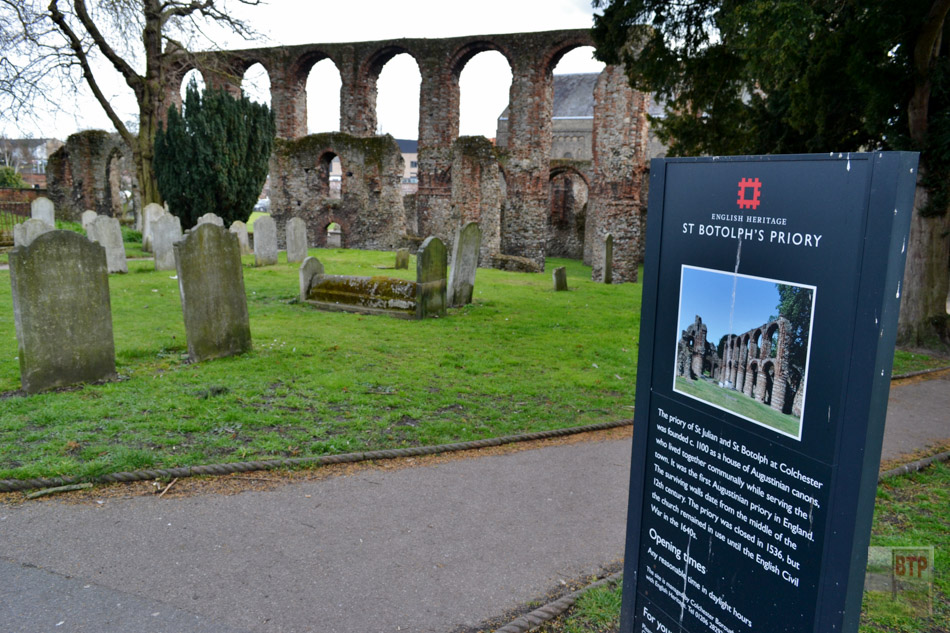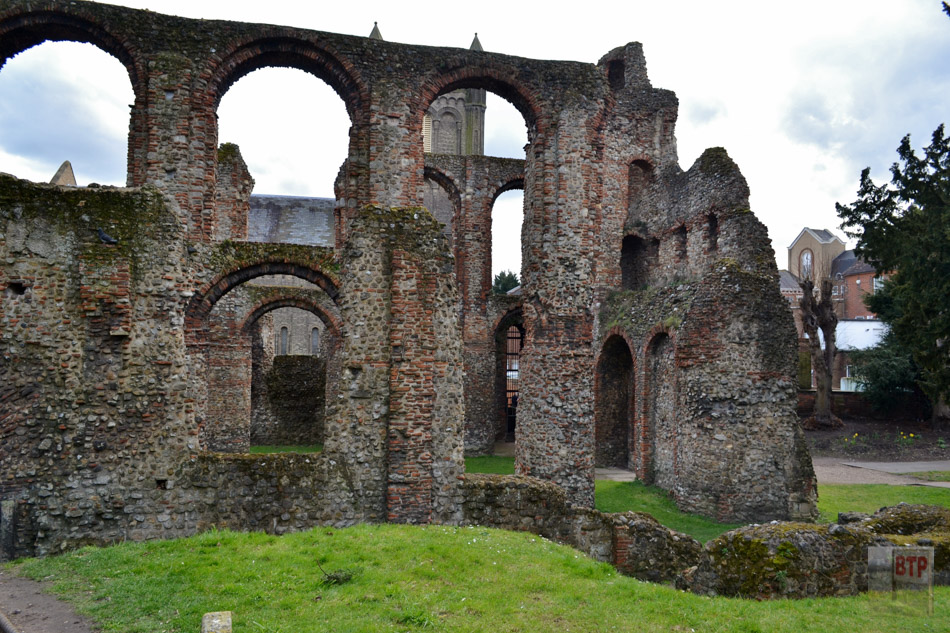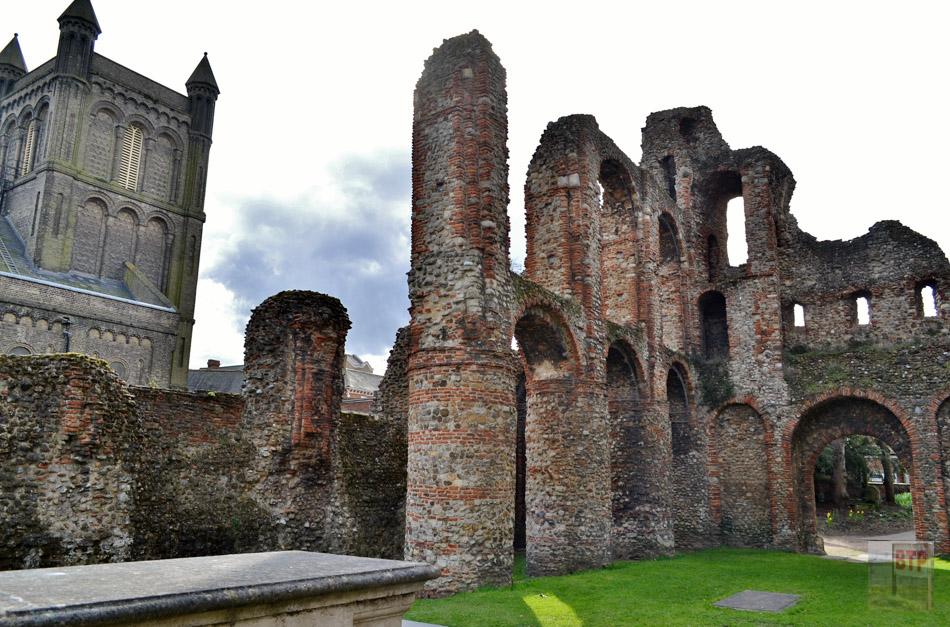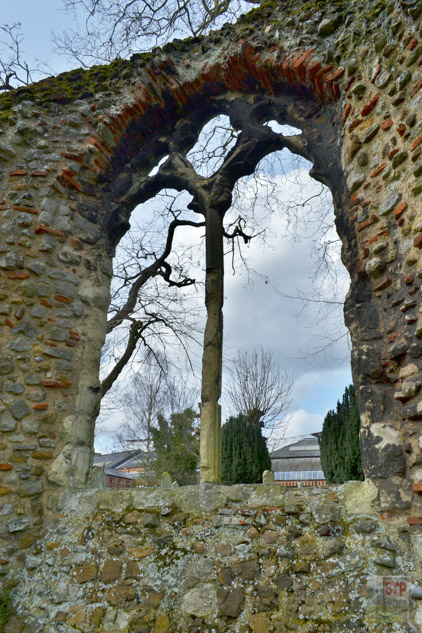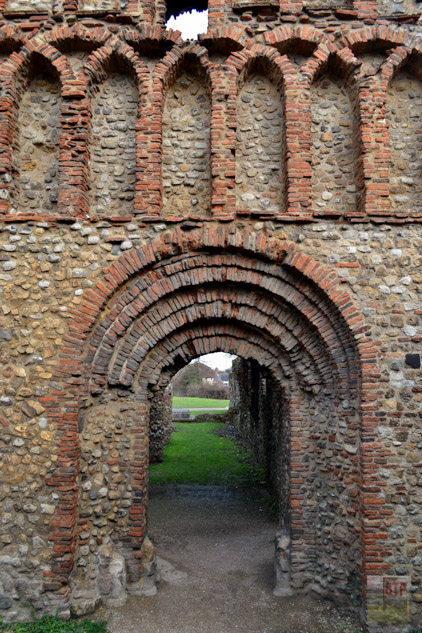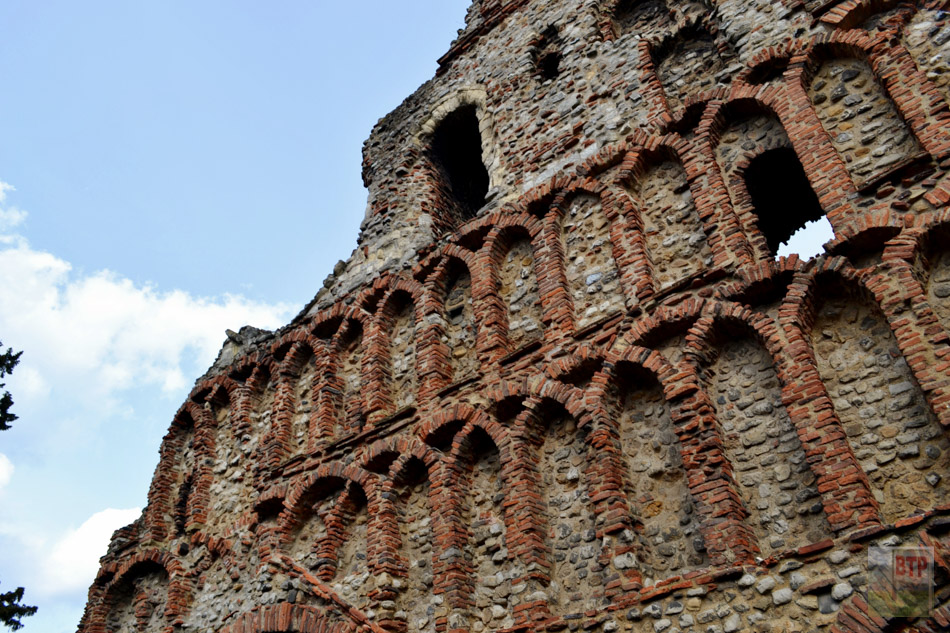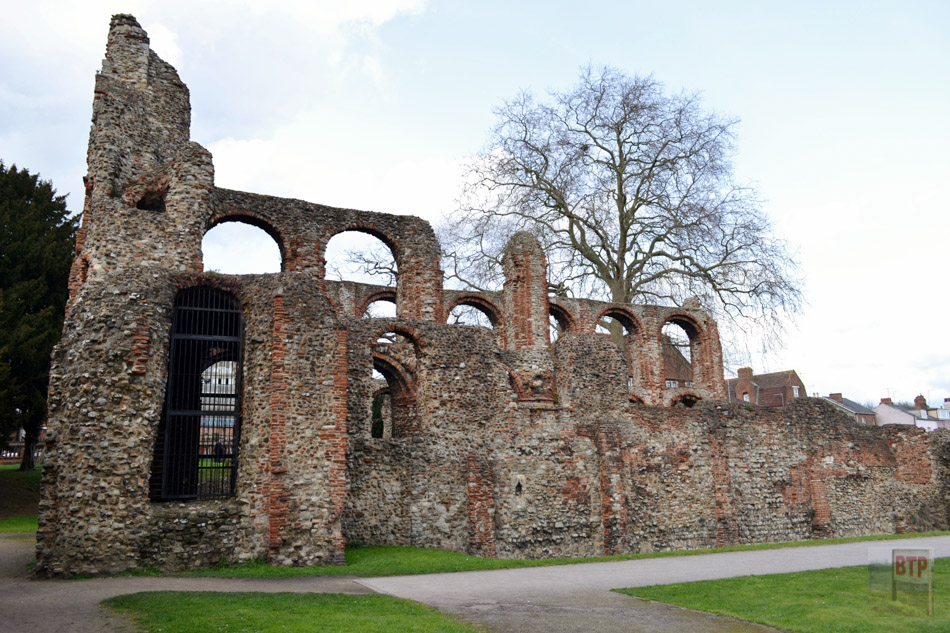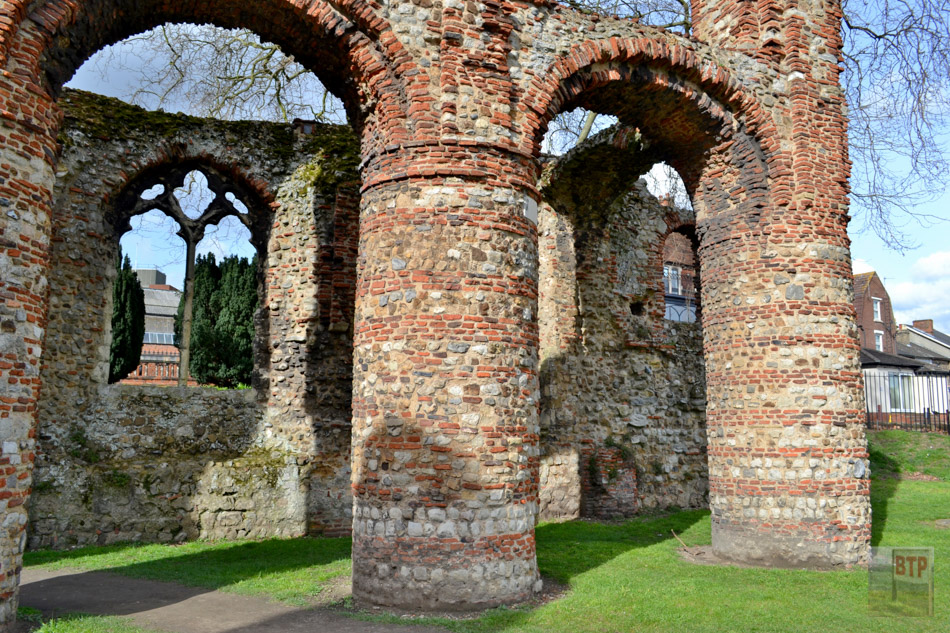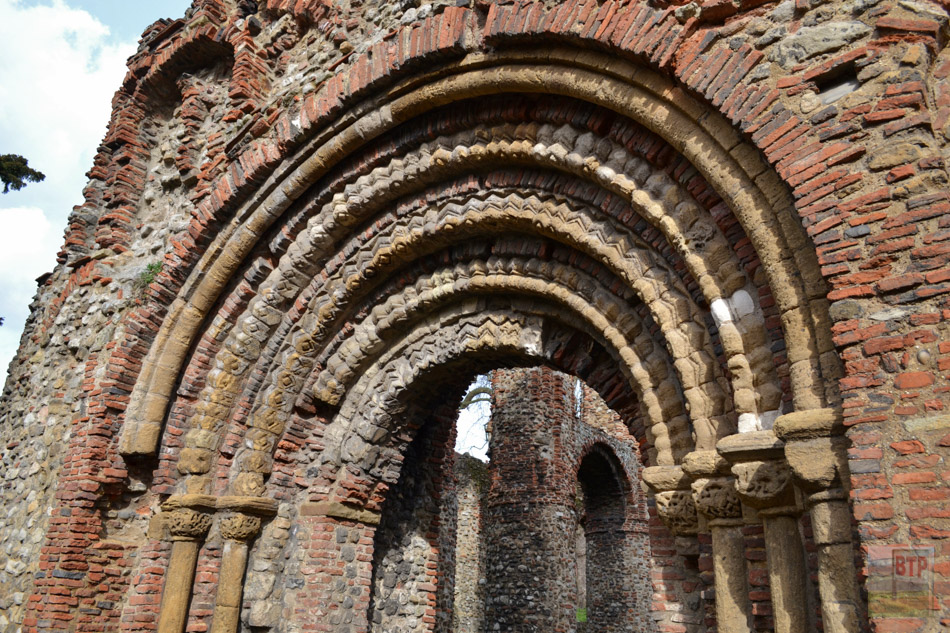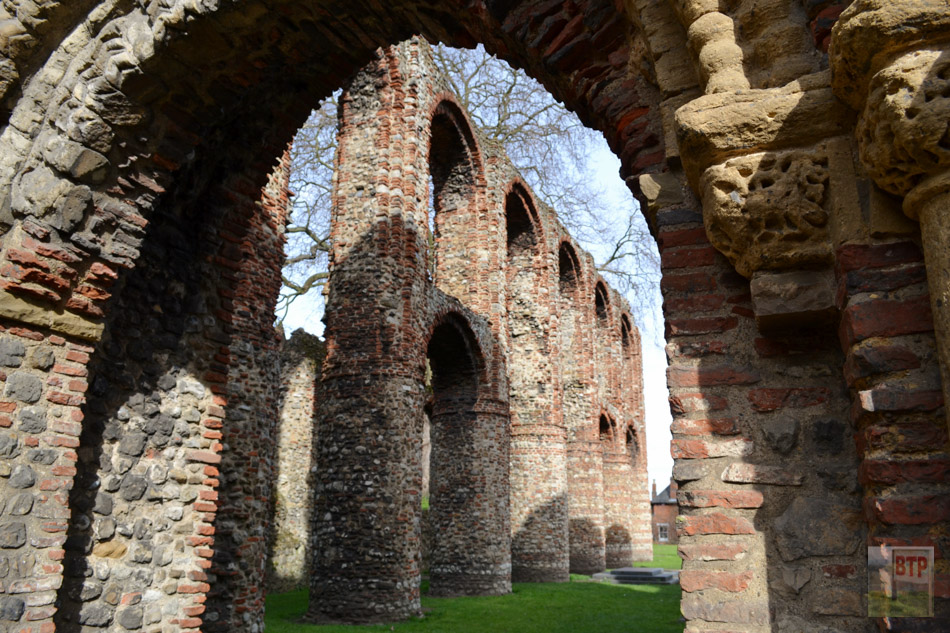St. Botolph’s Priory was an Augustinian religious house in Colchester, Essex, between c.1100 and 1536. It is Grade I listed and can be walked around today in a public park; owned by English Heritage. Whilst it is now only a ruin, it still bears intricate architectural features such as The Pardon Door archway (pictured) and rows of towering arches. It was built with both flint and reused Roman brick.
The priory developed from a Saxon church dedicated to St. Botolph which stood on its site. The church was not dissimilar to the Holy Trinity Church and tower which remains today nearby; Colchester’s oldest church. The priory was established by a Kentish priest named ‘Norman’ who had returned from study in France. Fast-forward to 1380, an interesting case emerges stating how some of the priors complained to the King that certain people were pretending to be their attorneys and proctors, using fake letters to collect money from unsuspecting victims. These imposters were arrested and sent to Newgate goal. Eventually the priory became impoverished. In 1421, the Pope offered to ease punishment for criminals who would aid with the conservation, repair, and alms-giving of the priory. The priory was subject to the Dissolution of the Monasteries in 1536, but the nave was retained as a parish church. During the Siege of Colchester in 1648 in the Second English Civil War, St. Botolph’s Priory was caught in a crossfire of bombardment by the New Model Army, and this is why it is heavily ruined to this day. In 1837, a Gothic Victorian church was built close by.
Sources: Wikipedia, English Heritage
This entry was posted in Location Report
